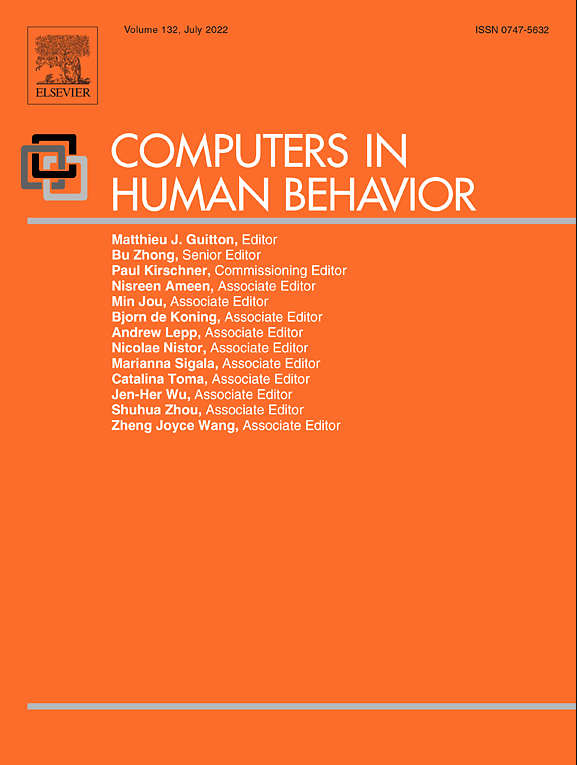Editorial Board / Publication information
E-critical/thematic doing history project: Integrating the critical thinking approach with computer-mediated history learning
The use of group support systems in focus groups: Information technology meets qualitative research
Clinical psychology offers in the internet in Spain
Computer-mediated critical doing history project
Perceiving artificial social agents
Social reactions toward people vs. computers: How mere lables shape interactions
The expression of social presence through the use of figurative language in a web-based learning environment
Developing geometry thinking through multimedia learning activities
Attitudinal and experiential predictors of technological expertise
Students’ linguistic behaviour in online discussion groups: Does gender matter?
The effects of group composition of self-efficacy and collective efficacy on computer-supported collaborative learning
Constraints on message size in quasi-synchronous computer mediated communication: Effect on self-concept accessibility
Preference for textual information and acting on support devices in multiple representations in a computer based learning environment for statistics
Computer-mediated group influence on ethical behavior
Perceived versus actual computer-email-web fluency
Including genotype information in health surveys
Increasing validity in the evaluation of new distance learning technologies
Investigating ownership and the willingness to share information online
Design and evaluation of a computerised version of the Benton visual retention test
Net-friends: Adolescents’ attitudes and experiences vs. teachers’ concerns
Decisional style and self-reported Email use in the workplace
Computer technology as object language: Revisiting office design
Articulation of web site design constraints: Effects of the task and designers’ expertise
Precursors of adolescents’ use of visual and audio devices during online communication
Self-regulated learning through writing on computers: Consequences for reading comprehension
The effect of person–organization fit feedback via recruitment web sites on applicant attraction
Interactive lectures: Effective teaching and learning in lectures using wireless networks
Selective self-presentation in computer-mediated communication: Hyperpersonal dimensions of technology, language, and cognition
Virtual team meetings: An analysis of communication and context


